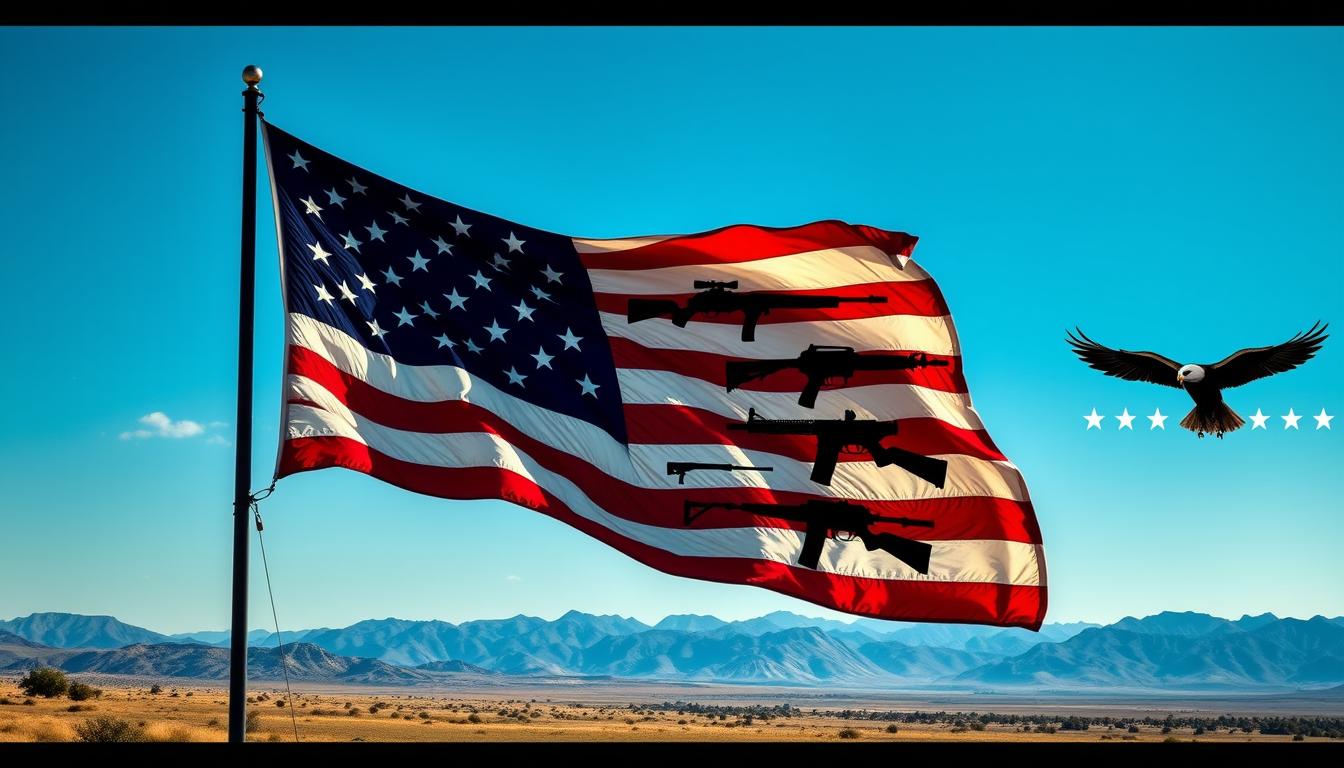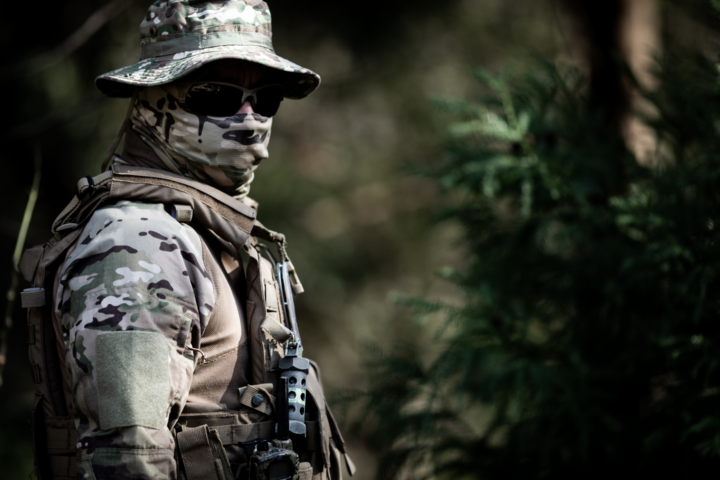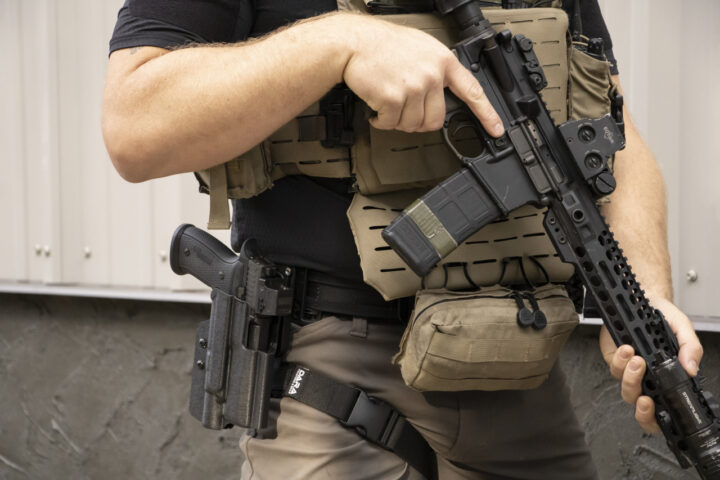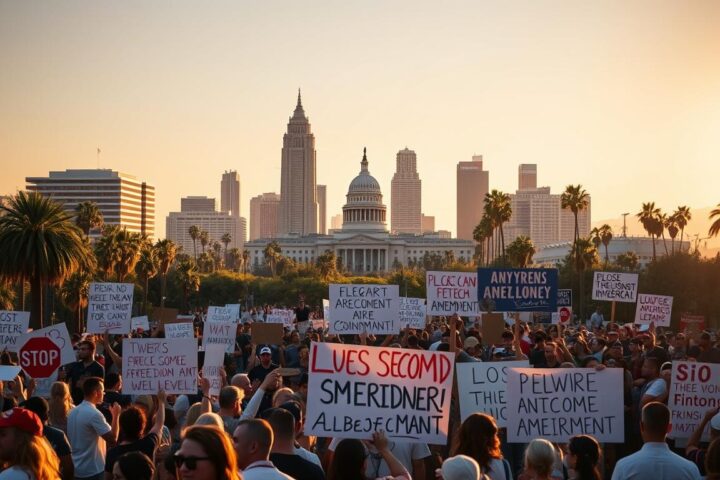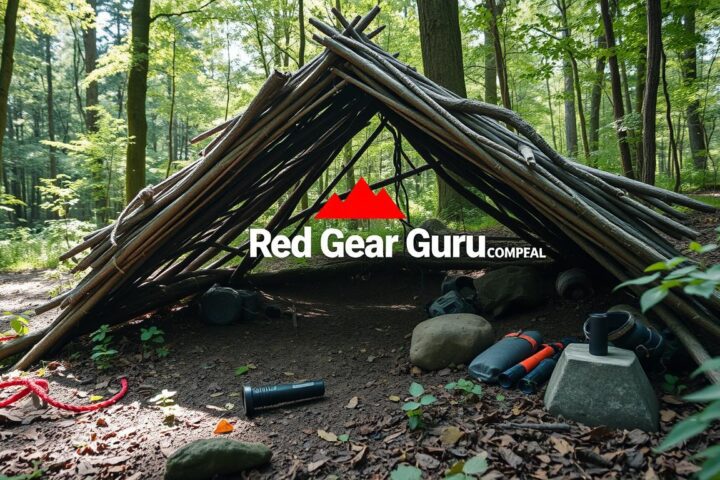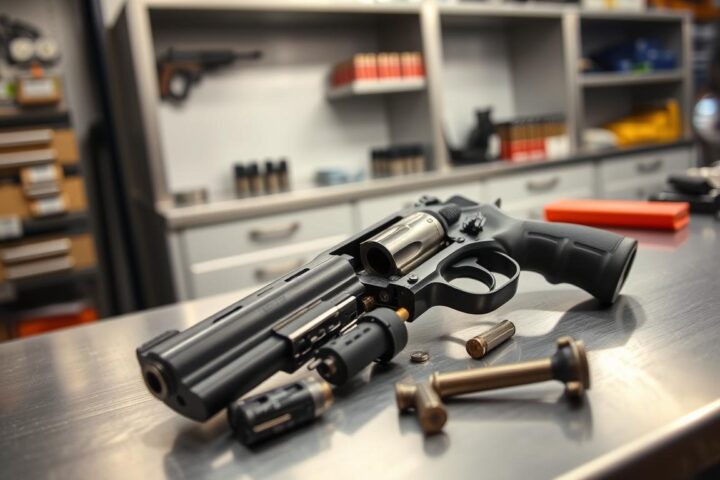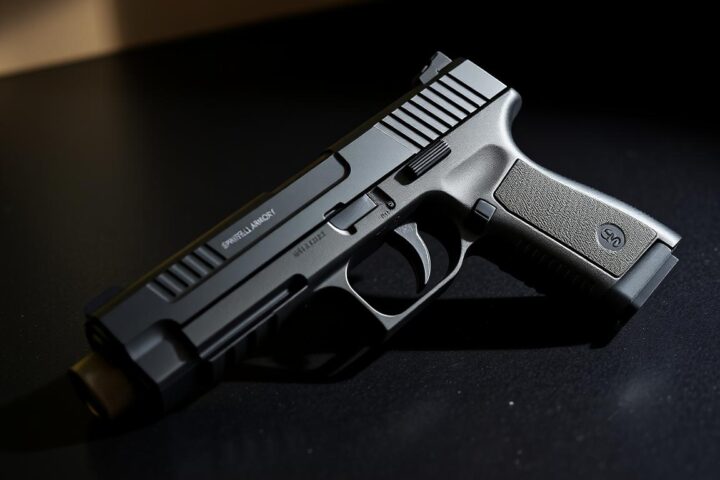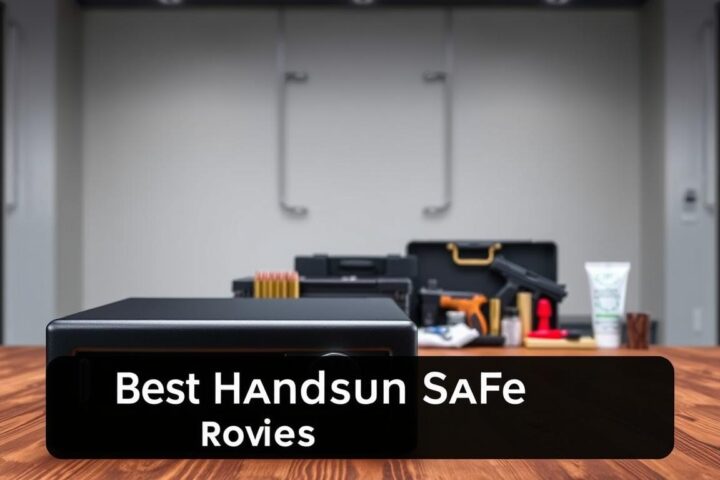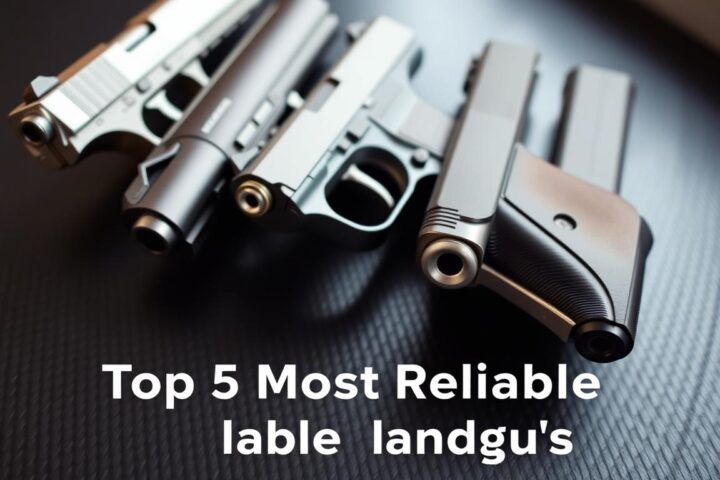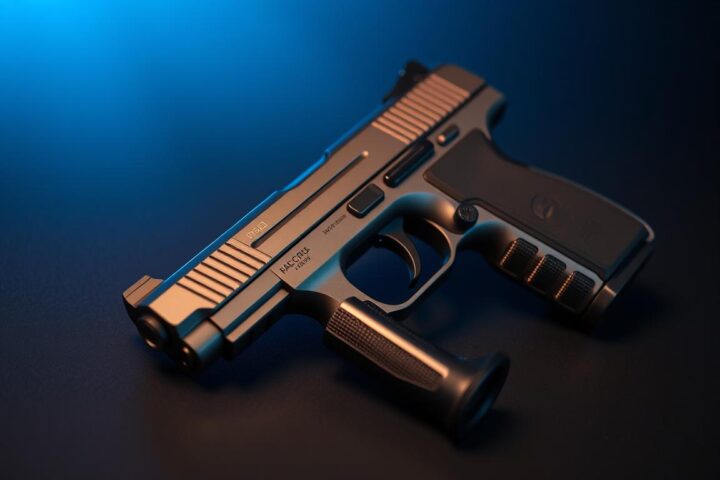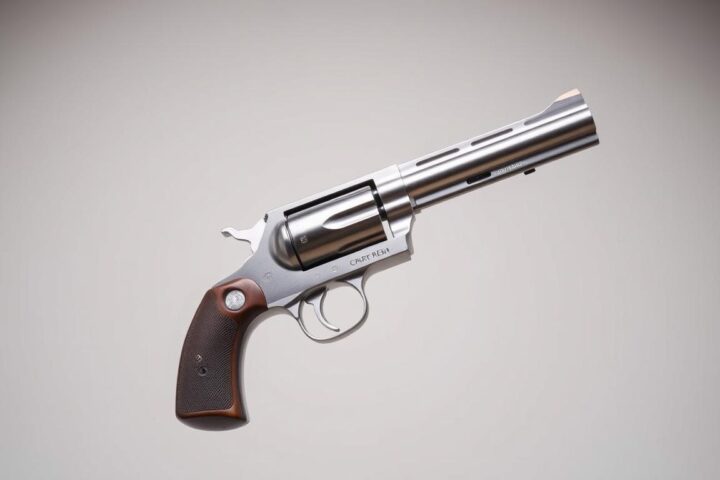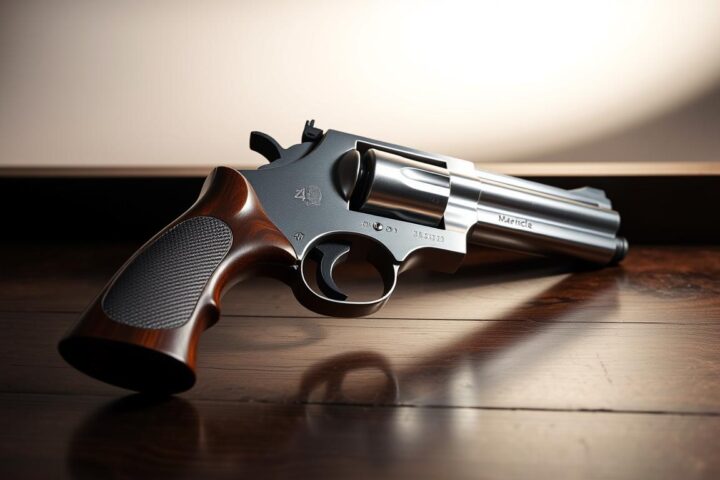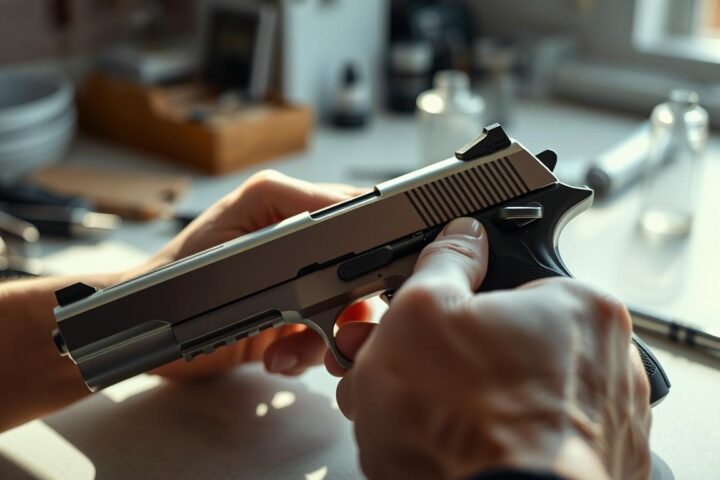Many people don’t know about the hidden gun laws and constitutional rights in America. These secrets are key in shaping laws and how people see them. This article explores these hidden facts, showing how advocacy groups and court decisions affect us.
The Constitutional Defense Fund (CDF) has raised $12 million from 2020 to 2022. A big part of this money goes to groups fighting for gun rights and lawyers. This has led to over 21 lawsuits against current gun laws, changing how we view guns in America.
Key Takeaways
- The Constitutional Defense Fund (CDF) collected $12 million from 2020 to 2022 for gun rights advocacy.
- Nearly $10 million of these funds went to gun rights groups and legal representation.
- Since 2020, 21 lawsuits have been filed to challenge gun restrictions.
- Donors Trust, with assets over $1 billion, has channeled money to the CDF.
- The Supreme Court’s decision in New York State Rifle & Pistol Association v. Bruen significantly impacted gun laws.
The Hidden Influence of the Constitutional Defense Fund (CDF)
The Constitutional Defense Fund (CDF) has become a key player in gun rights advocacy. It started as a small project at McLean Bible Church, led by Dale Sutherland. Now, it’s a major force in the national debate on gun laws.
The Constitutional Defense Fund got over $11.7 million from 2020 to 2022. Most of this money came from anonymous donors through Donors Trust. The Martino Family Foundation and the Story Garschina Foundation also gave $100,000 each in 2020. This money helps the CDF fight against gun restrictions in court.
In 2022, the CDF gave $380,000 to the Firearms Policy Foundation. It also gave $100,000 to the Claremont Institute and $50,000 to the Second Amendment Foundation in 2021. These donations help organizations defend gun rights.
The CDF focuses on winning legal battles. It works with Cooper & Kirk PLLC to file over 21 lawsuits since 2020. These lawsuits challenge gun restrictions, like bans on AR-15s and “ghost guns.” The fund’s work is crucial in fighting against strict gun laws.
Dale Sutherland, the CDF’s president, brings valuable experience. He works with International Care Ministries and the Code 3 Association. The board, including Joe Abdalla and Chris Clover, supports the CDF’s mission. Together, they help the gun rights movement grow.
The Constitutional Defense Fund also shapes public opinion. A national survey by Dr. William English showed many people use guns for self-defense. This survey helps gun rights activists win in court, even when some question its methods.
The CDF influence in gun rights advocacy is huge. With lots of money, smart lawsuits, and shaping public opinion, the CDF is key in defending and expanding gun rights in the U.S.
The Role of the National Rifle Association in Shaping Gun Laws
The National Rifle Association (NRA) has been key in shaping gun laws in the U.S. It started in 1871 as a sportsmen’s club and grew into a major lobbying force. By 2013, it had about 3 million members and a budget of $290.6 million. The NRA’s strong voice in politics and lawmaking has greatly influenced gun laws, with a significant NRA influence.
The NRA has used its money and members to push for gun laws. In 2014, it and its lobbying arm, NRA-ILA, spent $3.36 million on lobbying. This was more than the gun control groups spent that year. The NRA’s budget was much larger than the gun control lobby’s.
The NRA has also shaped public opinion on guns. A 2014 Pew Research Center survey found 52% of Americans support gun ownership. By 2018, after the Parkland shooting, more people wanted stricter gun laws. A Quinnipiac Poll showed 66% of voters supported stricter laws.
The NRA has fought many legal battles over gun control. It opposed the 2018 bump stock ban, which the Supreme Court later overturned. Despite legal setbacks and a drop in membership, the NRA keeps pushing for gun rights. In 2021, it spent $4.2 million on lobbying, showing its commitment to Second Amendment rights.
The NRA focuses on electing gun-friendly candidates. It grades Congress members on gun rights, from A to F. This grading system affects elections, showing the NRA’s wide impact on gun laws. The NRA fights for gun ownership rights in ongoing debates on gun safety.
The Financial Backing Behind Gun Rights Advocacy
Conservative and libertarian donors play a big role in funding gun rights. Groups like the Constitutional Defense Fund (CDF) get a lot of money from places like Donors Trust. This money helps push a conservative agenda in courts, focusing on gun laws.
The National Rifle Association (NRA) is a key player in this funding. It spent over $30 million in 2016 to help elect Donald Trump. Every year, the NRA spends over $10 million in Washington to support gun rights.
But, there are controversies in this funding. Dark money in politics raises questions about who’s really behind the money. For example, former NRA Chief Executive Wayne LaPierre used NRA funds for personal things. Also, about a quarter of the NRA board made money through contracts.
This has led to fewer donations as people lose faith in the NRA. They’re upset about the NRA’s extreme policies and leaders making money off the organization.
Despite these issues, gun rights funding still has a big impact. Gun violence kills over 44,000 Americans each year. The debate on gun control versus rights is fierce. Researchers have shown the dangers of guns, but funding for gun violence research is hard to get because of the Dickey Amendment.
For over 20 years, this amendment has blocked federal efforts to support gun control. It shows how powerful gun advocacy supporters are in politics.
The push for safer guns and gun rights is ongoing. To learn more about how gun rights relate to other issues, check out this detailed analysis on why gun rights are women’s rights.
Gun Rights, Gun Safety, Second Amendment: What You Need to Know
The talk about gun rights, gun safety laws, and the Second Amendment is key in American politics. To get it, we must look at history and laws that shape these rights and rules.
The Second Amendment was ratified on December 15, 1791. It made sure we have the right to bear arms. The case District of Columbia v. Heller in 2008 made it clear. It said we have the right to own guns for legal reasons, not just for the militia.
The McDonald v. Chicago case in 2010 widened this right. It said we can defend ourselves with guns, no matter where we are. These cases are crucial in understanding the Second Amendment today.
But, owning guns isn’t without limits. The Gun Control Act of 1968 set rules for who can own guns. It makes sure guns don’t get into the wrong hands. This act shows we value both personal freedom and safety.
Groups like the National Rifle Association (NRA) often fight against gun safety laws. They’ve challenged many gun rules since Heller. But, groups like the Giffords Law Center have defended these laws. They’ve filed over 125 briefs in 25 years to support stricter rules.
Getting the Second Amendment means seeing its two sides. It protects our freedom and also needs rules for safety. The ongoing debates aim to balance these, respecting the Second Amendment while keeping us safe.
The Undercover Pastor and His Mission
Dale Sutherland used to be an undercover narcotics officer. Now, he works as an Undercover Pastor. He moved from law enforcement to leading the Constitutional Defense Fund (CDF). Sutherland fights to protect and grow constitutional rights.
Dale Sutherland knows how important constitutional rights are. He uses his law enforcement background to defend gun rights. The Second Amendment’s history guides his advocacy. He works with CDF to educate people about their rights.
Sutherland’s role as an Undercover Pastor shows the link between faith and advocacy. He believes in gun ownership for self-defense. This is especially true for Black Americans, who have been buying more guns lately.
The Power of Dark Money in Gun Rights Advocacy
In recent years, dark money has greatly influenced gun rights advocacy. The Constitutional Defense Fund (CDF) collected $12 million in cash from 2020 to 2022. This money has a big impact on laws and public opinion.
The CDF gave nearly $10 million to gun rights groups and a top D.C. law firm. This has shaped gun policy in the U.S.
The CDF’s money is key in funding gun rights lawsuits. Cooper & Kirk, a law firm, got over $8 million from 2020 to 2022. This money helped fund at least 21 lawsuits against gun restrictions.
Donors Trust, with over $1 billion in assets, makes funding sources hard to track. It doesn’t have to reveal who gives it money. This lack of transparency is a big concern.
The CDF also gave money to groups like the Second Amendment Foundation and the Firearms Policy Foundation. These groups are key in fighting against gun laws. For example, the Supreme Court’s decision in New York State Rifle & Pistol Association v. Bruen has changed how gun laws are judged.
These legal battles affect everyone. After the Bruen decision, one gun law case was decided every day, says Jacob D. Charles from Pepperdine Caruso School of Law. This shows dark money’s big role in shaping gun laws and public talk.
To learn more about dark money and gun rights, check out this link.
Legal Battles Over Home-Produced Ghost Guns
The debate over ghost guns legality is heating up. Groups like the Constitutional Defense Fund (CDF) are fighting against new rules on these guns. The stakes are high, affecting public safety and gun laws nationwide.
The ATF has seen a big increase in ghost guns. In 2016, they found 1,758. By 2021, that number jumped to 19,344, a 1,000% rise. This shows how serious the problem is.
Everytown for Gun Safety Support Fund found nearly 70,700 ghost guns in 34 U.S. cities over five years. This is out of 178,218 crime guns total. The numbers are alarming.
The market for Polymer80 ghost guns grew by nearly 1,200% in five years. But, new rules led to a 28% drop in finds. Now, a court decision could undo these gains, making it easier to avoid gun laws.
The Supreme Court will decide in Garland v. VanDerStok if ghost gun kits should be regulated. This case could change gun laws a lot.
In 2022, the ATF made a rule that ghost guns are now under federal law. States and the federal government are trying to find a solution to the growing problem of untraceable guns.
Many states are taking action against ghost guns. At least 17 states have made new laws about gun parts and unfinished guns. The ATF also made a rule that requires background checks and serial numbers on these kits.
The fight over ghost guns is not just about guns. It’s about safety, rights, and the law. These battles will shape the future of gun laws in America.
The Influence of Conservative Legal Minds
In recent years, conservative legal minds have greatly shaped Second Amendment debates. Lawyers like Charles Cooper and his firm, Cooper & Kirk, have been key players. They use strategic litigation to defend gun rights, fighting for the constitutional framework.
The 2022 case of New York State Rifle & Pistol Association v. Bruen is a prime example. The Supreme Court blocked New York’s old concealed handgun law, expanding Second Amendment protections. Justice Clarence Thomas, a strong advocate for gun rights, has pushed for more challenges, showing the conservative legal stance.
For decades, the Supreme Court was slow to address the Second Amendment. But in 2008 and 2010, they made key decisions in Heller and McDonald. These decisions set the stage for individual gun rights. Yet, conservative lawyers keep shaping these cases, leading to varied outcomes.
Understanding these complex issues is crucial. It’s important to have empathy and respectful dialogue to bridge the gap on gun policies. This is what many progressives and conservatives agree on, as shown by numerous voices.
The current Supreme Court, seen as more conservative, has boosted gun rights advocates’ confidence. Cases like the Protection of Lawful Commerce in Arms Act show how conservative legal minds tackle gun violence issues. This affects both the legal and cultural views on the Second Amendment.
Not everyone in the judiciary agrees with these views. Former Chief Justice Warren Burger once called the right to bear arms a ‘fraud.’ But the conservative view has won out, aligning with gun rights supporters. As conservative lawyers keep pushing, their influence on Second Amendment legal battles remains strong and lasting.
The Impact of the Bruen Decision on Gun Laws
The Supreme Court’s decision in New York State Rifle & Pistol Association v. Bruen has changed gun laws across the country. This ruling set a new standard for judging gun laws based on history.
Since the Bruen decision, over 450 cases have looked at its impact on gun laws. This is more than after the Heller decision. Yet, about 88% of gun laws after Bruen have been kept in place.
Interestingly, most of these decisions were made by judges appointed by Republican presidents. Judges appointed by former President Trump made 42% of these decisions. This shows how Supreme Court rulings shape gun laws.
The decision also showed that lower courts have a big role in keeping gun laws. Justice Kavanaugh said the Second Amendment allows for different gun regulations. Since then, states like California and New York have made it harder to get concealed carry permits and expanded background checks.
Despite these changes, gun violence remains a big problem in the United States. In 2021, gun homicide rates went up by 8.1%, causing nearly 21,000 deaths. Gun suicide rates also rose by 8.4%, leading to nearly 26,000 deaths. The increase in gun sales has been linked to more gun-related deaths, making it crucial to understand the Bruen decision’s lasting impact.
Grassroots vs. Top-Down Gun Rights Movements
In the world of gun rights, grassroots advocacy and top-down movements are key. Grassroots efforts are fueled by the passion of everyday people. They work through local groups, lobbying and rallying support.
These efforts have made a big difference, especially after big shootings. For example, after Sandy Hook and Umpqua Community College, many people got involved.
On the other hand, top-down movements, like the National Rifle Association (NRA), use big money and plans. The NRA is very powerful, blocking laws with money and support. They grade politicians, helping the NRA grow and raise more money.
This is different from grassroots, where change comes from the people. It shows how different strategies affect change.
A 2013 survey showed 90% of Americans want universal background checks. But, the NRA’s power makes laws hard to pass. Grassroots efforts, like “Cocks Not Glocks” and Moms Demand Action, show the power of community.
It’s important to understand both sides of gun rights activism. For more, visit National Gun Rights Advocates Demand Action Against Local Gun Control.
